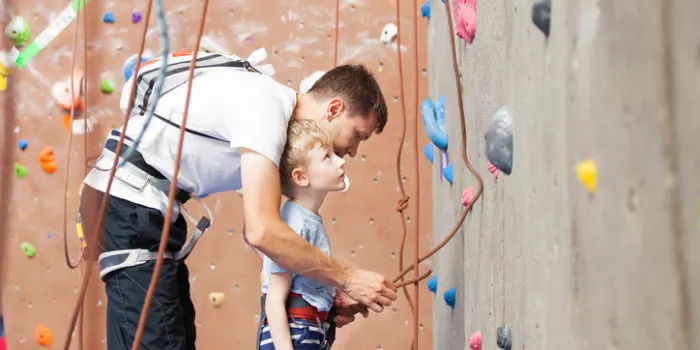Winter weather drives many people with bleeding disorders indoors. But cold and snow shouldn’t mean the end to exercise. Getting outdoors and being active is important not just for your physical health, but also for your mental health.
“Part of what makes people miserable in the winter is being confined,” Norman E. Rosenthal, a psychiatrist and author of Winter Blues: Everything You Need to Know to Beat Seasonal Affective Disorder, told The Washington Post. “Getting outside opens a whole vista,” he says. “The greater the light in your environment, the more serotonin release in the brain—and that is known to be a very potent mood regulator.”
If you have a bleeding disorder, high-contact sports like ice hockey aren’t the best option, but there is still plenty of wintertime fun to be had, indoors and out. NHF’s “Playing It Safe” brochure offers a breakdown of activities and their risk level. According to the guide, winter activities considered high-risk include ice hockey and snowmobiling. Downhill skiing and snowboarding are moderate- to high-risk activities.
Here are a few low- to moderate-risk activities to try this winter:
- Play in the snow. Cross-country, or Nordic, skiing is great exercise and very low-impact. Or you could strap on some snowshoes and explore woodsy trails near your home. Use more caution if you try sledding, which has a higher risk for impacts and falls.
- Try a class. Zumba, yoga, or any number of other classes get your heart pumping and your muscles working. Spinning—indoor cycling—is particularly low-impact. Check schedules at gyms, the Y and rec centers to see what’s offered near you.
- Hit the pool. Swimming is a great, low-impact exercise for individuals with bleeding disorders. It builds muscles, yet doesn’t stress joints. You may even find an outdoor heated pool near you where you can enjoy a bracing Nordic-style swim.
- Join an indoor sports league. Being part of a team is a good way to stay motivated and stick to a regular workout schedule. Does work have an indoor basketball or volleyball team? Join up. Do friends play soccer on the weekends? See if you can tag along.
- Go climb a rock. Indoor rock climbing offers a full-body workout. Pay attention to safety and always climb with a harness and ropes. Free climbing or bouldering without a harness and ropes is high-risk for people with bleeding disorders.
- Walk it off. Walking is the classic low-impact exercise. You’ll need to bundle up more in the wintertime and watch for icy spots, but keep moving in the brisk air and you’ll warm up soon enough. If you really can’t stand the cold…well, there’s always the treadmill.

